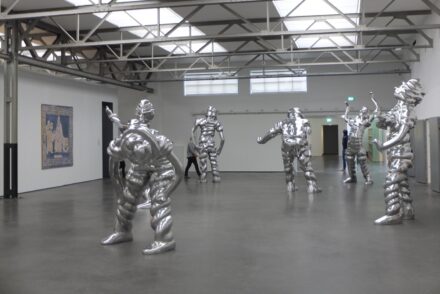Science: the last hope for innocent Steven Avery
Philosopher of Science Herman de Regt (Tilburg University) dove deeply into the case of Steven Avery, the ‘perpetrator’ of Netflix’s blockbuster Making a Murderer. Netflix has not yet announced the release date of season 2, but new episodes will arrive some time this year. Will Steven Avery finally be set free? According to Herman de Regt, science may Avery’s his last hope. He argues that criminal justice simply cannot do without science.
Finally! Kathleen Zellner, Steven Avery’s Lawyer, the alleged assassin in the series Making a Murderer, has now supplied the online available material with which Avery might finally be released, after 12 years’ imprisonment. And let’s not forget: Avery had already been imprisoned innocently for 18 years because of a miscarriage of justice that was only acknowledged later on.
On 7 June this year, Zellner presented a request to the Manitowoc Court to release Avery or to re-open the case for a new trial. The material collected by a team of scientific experts shows that there is more than just reasonable doubt about Avery’s guiltiness. To put it mildly, it’s very unlikely that Avery killed the photographer Teresa Halbach. The real murderer is still out there. Meanwhile, there are several indications that the ex-boyfriend of Halbach, Ryan Hillegas, may well be the culprit – and that somebody assisted him in fabricating and placing the ‘incriminating evidence’ against Avery.
What Making a Murderer already seemed to suggest, now turns out to have actually happened, says Zellner. It’s true that everything is slightly more nuanced, but Avery has definitely been set up – by the real perpetrator and by the judiciary.
Early June this year it was once again judicially found that the confession of Brendan Dassey, Avery’s nephew and supposed accomplice, is of no value whatsoever, because it was made under improper circumstances. Under sly psychological pressure justice had simply put the words in Brendan’s mouth. And that false confession is the only ‘proof’ in this case. Dassey would therefore now be released, were it not for the fact that the prosecutor (the state of Wisconsin) has once again lodged an appeal.
In the Avery case, Zellner is now doing what the defense in the Making a Murderer series failed to do or was not yet able to do: ask the right questions and provide evidence to answer those questions in favor of Avery; use appropriate scientific techniques to reveal exculpatory evidence for Avery; and present new evidence that scientifically shows that Avery is very unlikely to have committed the murder. Zellner seems to have gathered enough material to show that Avery simply can’t have done it.
Science is the last lifebuoy for the innocent Avery. It is science that shows that evidence has clearly been fabricated, withheld or misinterpreted. For example, on the bullet that Halbach was supposed to have been shot with through the skull, there’s no bone material whatsoever, even after washing the bullet to loosen DNA. The bullet does contain wood and paint residues.
Scientific methods were also applied in order to simulate the conditions under which the infamous car key of Halbach’s Toyota RAV-4 must have miraculously emerged from the small bookcase. In addition, scientific research shows that the key can’t have been the car key Halbach used on a daily basis and that Avery’s DNA has been artificially rubbed onto this spare key.
A critical note about Zellner may also be placed, though. She presented the ‘brain fingerprint’ research done by Farwell on Avery. This type of research is scientifically very controversial and weak. Let’s hope that this substandard material does not divert attention away from all the evidence that is truly convincing.
Yet the best example of how scientific assessment methods are applied is one that is generally emphasized by the philosopher Ton Derksen in his criticism of rambling lawsuits. The court is confronted with only one hypothesis: Avery did it. But science says that a hypothesis is only plausible or not plausible in relation to alternative hypotheses that fit on the same material. By presenting the scenario ‘Ex-boyfriend Ryan Hillegas has murdered Halbach’ as an alternative hypothesis that also fits in with all the available material – and that matches the new analyses even better – Zellner has cast reasonable doubt on the idea that Avery is the killer.
An alternative to the prosecution’s scenario is therefore crucial and must be put forward by the defense with the best possible arguments. That is what Zellner is doing now. Soon to be seen at home on Netflix, in Making a Murderer – Season 2. In the meantime, we hope that future lawyers will learn to think mainly scientifically. And that Avery will be released.
The above opinion of Herman de Regt was originally published in Dutch in June 2017, and also appeared in De Volkskrant.






